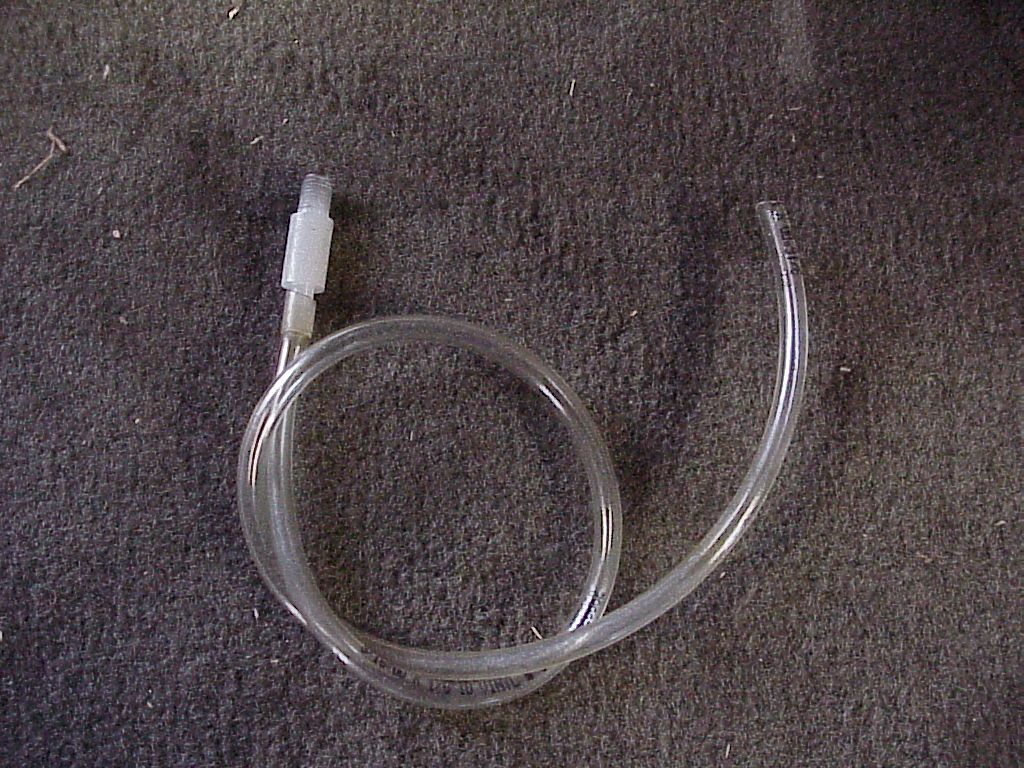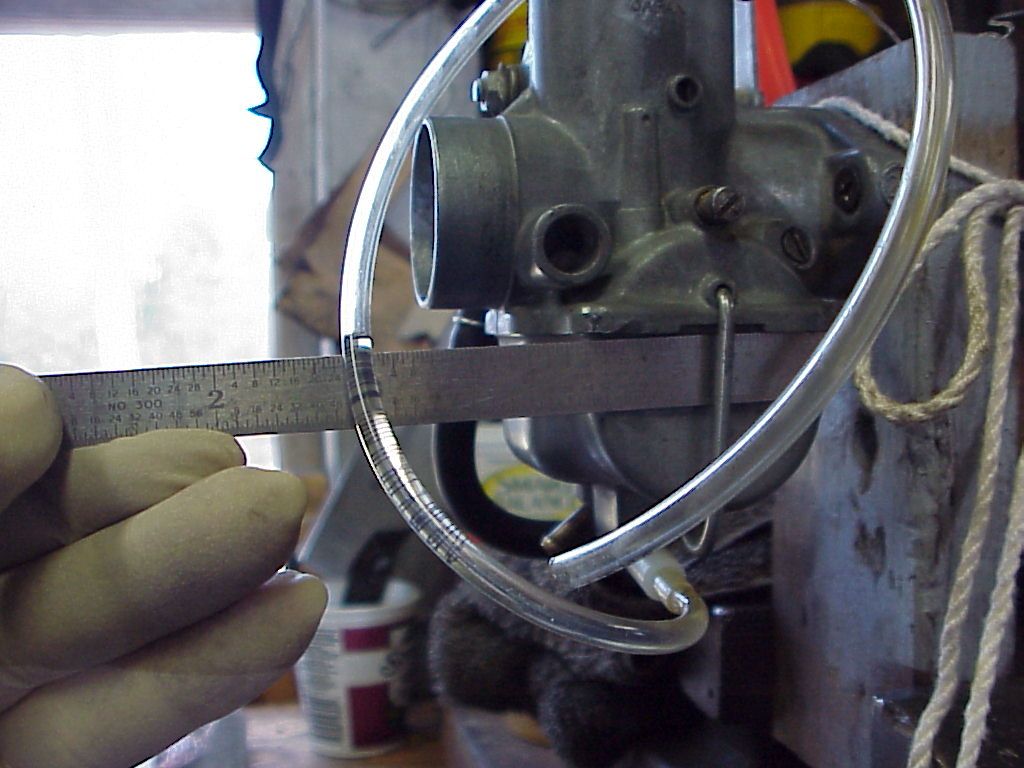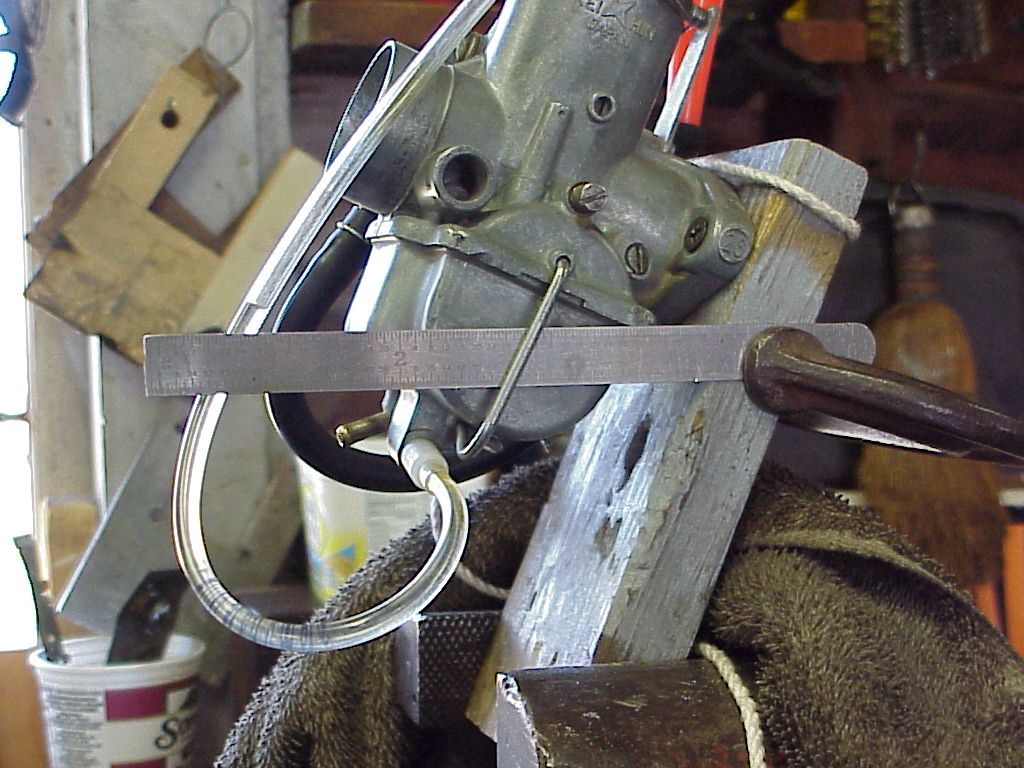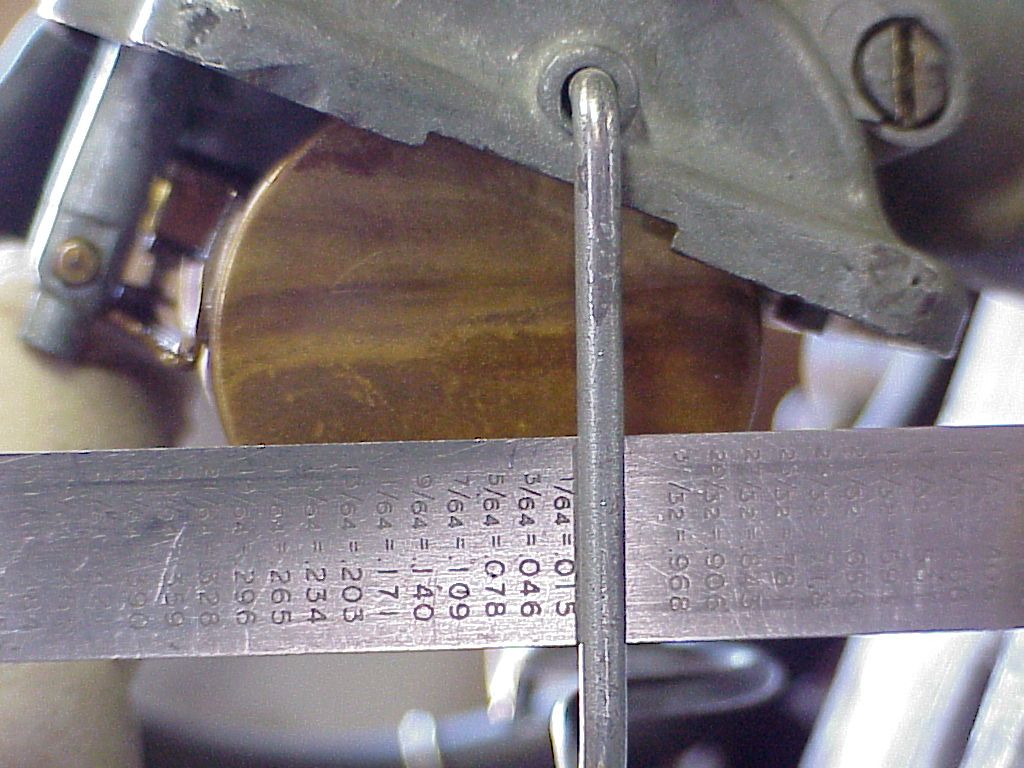Armed with what has been mentioned here and the CL72 manual which shows the fuel level in the diagram with the carburetor bore level and provides a dimension "H" which is from the bore base to the top of the fuel level. But nowhere do they give "H" for the CL/CB 72/77 engines.
Looking at the diagram, it appeared to me that the fuel level, when the bore is level, is just below the bowl gasket surface.
So, I wanted to verify that point. To do so, I machined a small nylon fitting that screws into the bowl drain hole and would accept a 1/8" piece of clear plastic tubing that would reflect fuel level in the bowl. This is my sight tube.

I mounted my carb to a piece of wood and clamped it my vise so the bore was level.
I put a small funnel in the end of the fuel supply tubing and kept it above the level of the carb. I poured gasoline into the funnel until the fuel level in the supply line was up to the funnel and remained there. This indicated that the float valve had closed and the max fuel level in the bowl was now established.
I then looked at the fuel level in the clear sight tube and it told me that the fuel level with the float set at 22.5 mm from the notch was indeed just below the gasket surface of the bowl.
Here is a shot of that with a scale held along the bowl to provide a comparison to the fuel level in the sight tube. As you can see, the fuel level is just under if not level with the gasket surface of the bowl.

That told me that 22.5mm from the notch appears to be correct for a level carburetor. And that is all it told me.
I then set out to duplicate the carb position as it is mounted on the engine and to measure fuel levels at various float settings.
I measured the angle of the head intake port with both tires on the ground and then set the carb in my vise to that same angle.
With the float still set at 22.5mm from the notch, here is a picture of the level in the bowl.

The steel scale is set at the bowl gasket surface and is set dead level. You can see that the fuel level is way above the gasket suface at the front (engine side) of the carb.
So, the next test was to reset the float level to Loud Mouse's recommendation, which is the top of the jet holder.
To start, I measured both jet holders in both carbs and they were within 0.010" of each other relative to height from a given point on the carb body.
With the float set to the top of the jet holder, here is a picture of the fuel level in the bowl.

As you can see, it did not change a lot, but it did go down, which is to be expected. It appears to still be slightly above the gasket surface, but not as much as before.
Based on this, I concluded that for my particular bike, this is where I want the floats set. I would not go any higher for fear of starving the engine of fuel at prolonged high RPM/load.
So I measured from the top of the jet holder to the 3 possible locations from which one could measure float height and recorded the dimensions. They were:
1. Bowl gasket surface of carb body - 28mm
2. Notch - 26mm
3. Lip around gasket - 24.5mm
With this done, I made another observation because the evidence presented itself.
Both of my floats were stained from fuel and there were distinct level lines on them. So, I kept the carb at the angel when on the bike and then set the float so the lines were level. Here is a picture of what I observed.

As you can see, the boldest line is above the gasket surface. There are other lines which are lower. I suspect there are multiple lines from the bike being parked on the side stand and center stand and the angles changing. The most prominent one is at the top and coincides with the 22.5mm from the notch float setting. But I must say that I'm not sure these lines can really tell you anything since you will never know if the bike was always on the side stand or center stand or if it was parked on unlevel ground for a long period of time. But it was interesting to see that the level in the bowl was for some extended period, above the gasket surface.
So, my conclusion as mentioned above it that the Loud Mouse setting of the top of the jet is what I believe is correct and what I will use from here on out.
regards,
Rob





